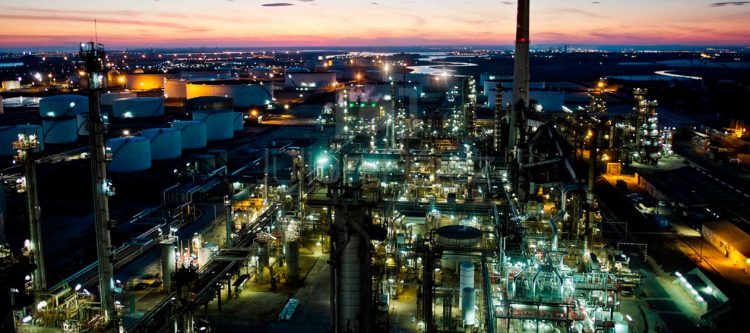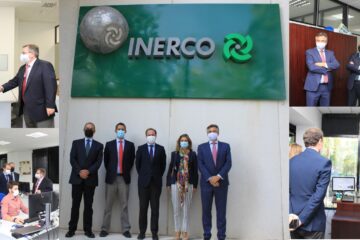Taxonomy, key to new sustainable financing of industry and energy

On Wednesday 11 December, the European Commission published the so-called European Green Deal, which was endorsed by the European Council the following day.
This extremely important document includes, among other objectives, the ambition of having a climate-neutral continent by 2050 and making the EU the world leader in ‘green’ financing based on a long-term EU strategy, which must be in place by 2020.
According to the previous Commission[1], Community legislation lacks clarity and consistency, and as a result institutional investors, asset managers, financial investment advisors and insurance company investment managers currently have no incentive to incorporate ESG (Environmental, Social and Governance) factors into their decision-making and advisory processes. In addition, end investors have difficulty identifying truly sustainable opportunities and the extent to which these ESG criteria are incorporated into the financial products being marketed.
A proposal for a regulation has therefore been drawn up to facilitate these investments, a document which is the cornerstone of the financing of activities to enable the transition to a sustainable and decarbonised economy and on which the Council has already adopted a common position on 23 September.
The proposal identifies several environmental objectives:
- climate change mitigation and adaptation
- sustainable use and protection of waters and marine resources
- transition to a circular economy
- pollution prevention and control
- protection and restoration of biodiversity and ecosystems
- It is important to emphasize the explicit recognition of sustainable development as more than just pervasive climate change.
On this basis, for an activity to be environmentally sustainable, accredited as a ‘green’ investment and benefit from future European support policies, it requires the fulfilment of a set of requirements. The activity must make a substantial contribution and not affect any of the above objectives, be carried out according to social and governance criteria, and meet specific technical criteria.
These criteria – quantitative and qualitative – will be defined for each of the six environmental objectives. And they will constitute the so-called taxonomy: a European classification system to determine whether an economic activity is green or brown. For the sustainable ones, the Commission will devise measures to redirect capital flows to the detriment, obviously, of the unsustainable ones.
The taxonomy -now in preparation and in force in 2022-, will be translated into very detailed criteria that will make it possible to identify those activities susceptible to ‘sustainable’ financing, such as Green Bonds, and to help investors and managers in their activity. In addition, it will allow limits to be placed on greenwashing, whereby activities are sometimes presented as being environmentally friendly, when in fact they are not.
In relation to the environmental objectives mentioned, there are activities that the draft regulation considers to contribute to the mitigation of climate change: production, storage and use of renewable energy, energy efficiency, capture, use and storage of CO2, elimination of anthropogenic GHG emissions and production of fuels from renewable or carbon-neutral sources, among others.
But the taxonomic criterion goes much further.
Wind, photovoltaic or concentrated solar power production would be ‘eligible’ for sustainable financing only when they operate in such a way that their life-cycle emissions (from cradle to grave) are less than 100g of CO2 equivalent per kWh, decreasing progressively to 0g in 2050.
By the way, these are the same values that will be demanded from the production of electricity via gas combustion, which also has limits on the emission of pollutants (nitrogen oxides, for example). And in the transport of electricity, those lines that provide service to electricity generation facilities with a carbon footprint greater than 100g of CO2 per kWh would not be eligible for financing.
It can easily be deduced that the technical criteria for the chemical, fertiliser, cement, aluminium and steel industries will be extremely demanding. And the need for solvent, rigorous and experienced technical support for the identification and preparation of bankable projects is absolutely essential.
It is clear that redirecting capital flows towards investment in sustainable activities appears to be a very powerful tool for the EU to achieve its decarbonisation objectives. But if there is no funding for activities that are less sustainable than the ones that are desired, they will starve. And we are talking about a direct impact on more than one million highly qualified jobs in a key productive sector, which accounts for a quarter of the European Union’s current GDP.
The cost to the European economy and its competitiveness should therefore be carefully assessed in this process, so as not to destroy activity and jobs in the name of decarbonisation, let alone promote relocation.
[1] COMMISSION STAFF WORKING DOCUMENT, SWD (2018) 265 FINAL
Vicente Cortés, President of INERCO
Gonzalo García Valero, Head of Consulting, CASER Asesores Financieros
Tribune published in number 82 of the magazine ‘Energía’ of the ‘El Economista ’(December 2019)






